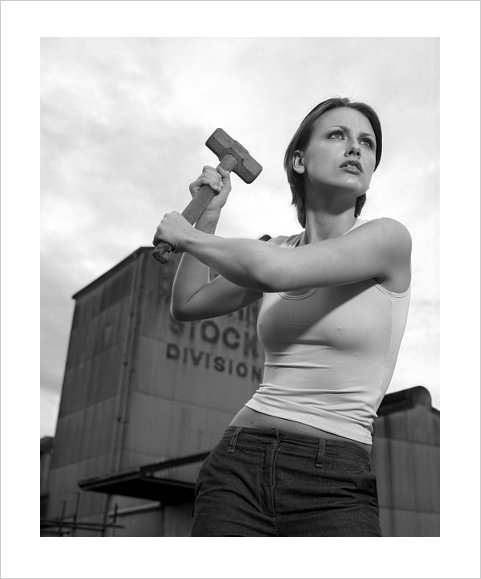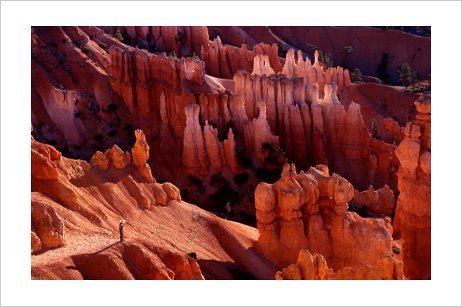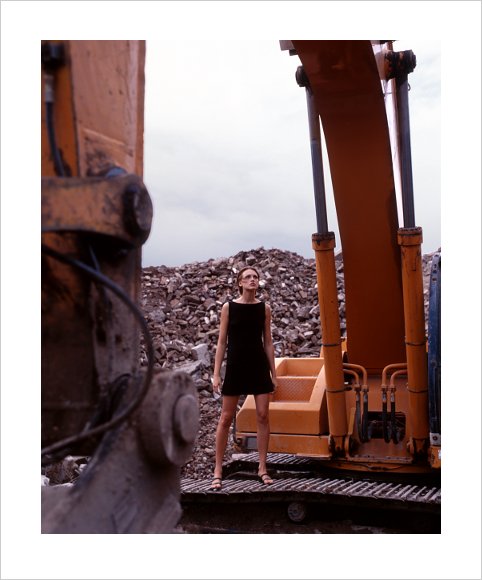If you’re a manufacturer wanting to incorporate a Blu-Ray device in your product, you need to negotiate a license with each of the three bodies that represent the various patent holders – 18 in total.
Monthly Archives: February 2009
Meaningful measurements
We shouldn’t be surprised that road safety authorities are obsessed with speeding – it’s an easily measured safety factor in a sea of possible factors (fatigue, distractions, blood alcohol, skill, training, conditions and vehicle maintenance to name a few) that are not. It was then only a short step to attribute meaning to that limited data set and blame speeding for almost everything. This long-running road safety TVC is a particularly good example of this, blaming speed for three dangerous behaviours that include no speeding at all:
Humans are particularly good at recognising patterns and applying meaning to data no matter how poor our data sets are – consider astrology, for example. Ensure, therefore, that you go well beyond the easily measurable data – consider instead what factors might be meaningful and find new ways to measure them.
Get out – quickly
Hi.
G’day.
I’m with [a company offering phone + internet packages] but you’re with Telstra.
Yeah.
Who do you use for internet?
TPG.
Which package?
Fifty gig.
Oh – I can’t beat that …
No.
You use it all each month?
Yeah.
It’s good isn’t it – I’m on TPG’s seventy gig plan.
Sorry?!?
Yeah, don’t tell anyone … [walking away, grinning sheepishly]. See you.
‘Night …
Hammer

‘Hammer’ was the last shot at the end of a long and, at times, stressful day. The last location was Granville, apparently only metres from where the Granville rail disaster took place. By this time the light was fading fast – fortunately I had purchased a ridiculously long power cord the day prior and the very obliging owner of an adjacent workshop allowed me to power my studio flash unit.
Originally the image was of just the model and building behind (no hammer) and it lacked the strength I was looking for. Then the word ‘perestroika’ hit me and I went back to ask the very obliging workshop owner for ‘a large tool, preferably a hammer’.
As this image was for my portfolio, I had arranged a contra deal with the modelling agency – use of the model’s time in return for images for her portfolio. Proudly showing the agent the final images, I found that she disliked all of them except one – after a day of shooting 100 frames of 6×7 film I had, to my embarrassment, taken only one of her smiling.
User Experience Design
- Podcast feeds: via Feedburner or Subscribe on iTunes
- Other AP resources: Blog Events Website
- TED talks: Design is in the details Human-centred design Creativity & play
- Process: IDEO Method Cards Article search
- Other IDEO resources: Blog (RSS feed) Website
- Podcast: Subscribe on iTunes
- Other B&A resources: website blog feed
- Podcasts (subscribe on iTunes): dConstruct 2008 dConstruct 2007 dConstruct 2006
- Other CL resources: website
- Podcast feed: Subscribe on iTunes
- Other I&D resources: website
Bryce canyon ranger

Front End Loader

This is one of my favourite portfolio images, probably because I attempted to make a dramatic image of contrasts without crossing over into absurdity (and felt that I succeeded). It’s also because as I look at it there’s nothing I want to change – as a perfectionist this is a rare pleasure.
Even without a client looking over your shoulder shooting this kind of scene can be stress-inducing – a model, your assistant/makeup artist and the site staff waiting for instruction and you have 15 minutes to find a scene, set up, take the shot (including backups, variations, etc), pack up and leave to do it all again somewhere else. In this case the concept came quickly but the details were difficult – the hair on her cheek, the stance with more weight on the forward foot, where she should look, the height of the tripod to locate the height of the rubble in the background, etc.
I’d show you the location of the worksite but as you’ll see from other images in this series, we took images only metres from fast-moving, rock-crushing machinery and I dare say that this was not in full compliance with work safety requirements …
